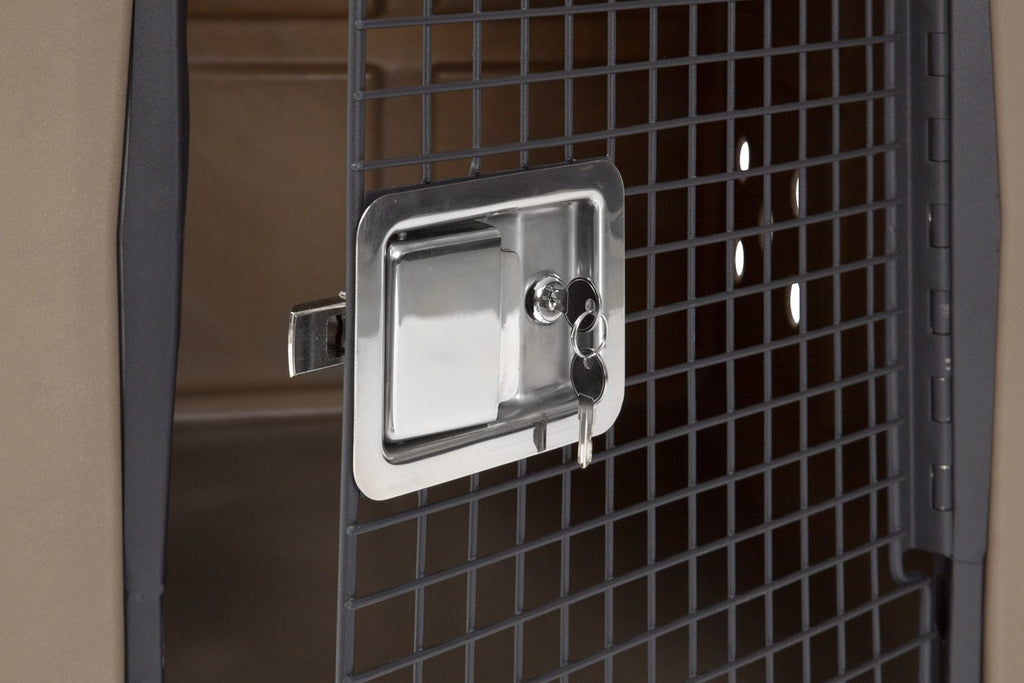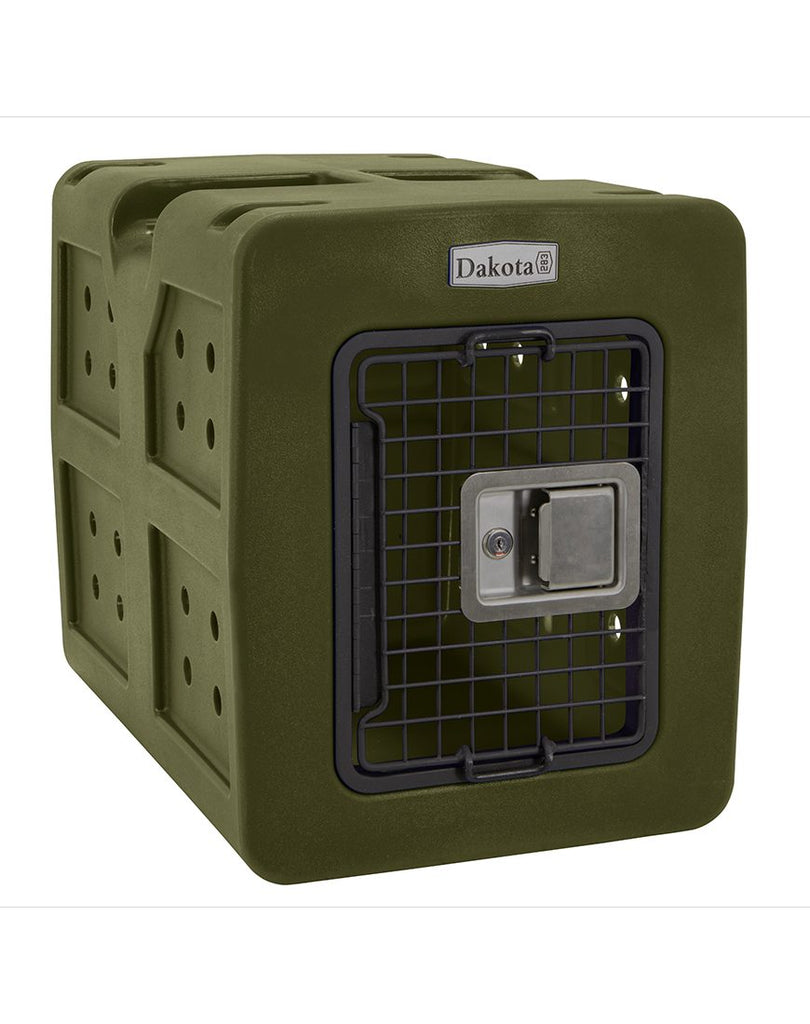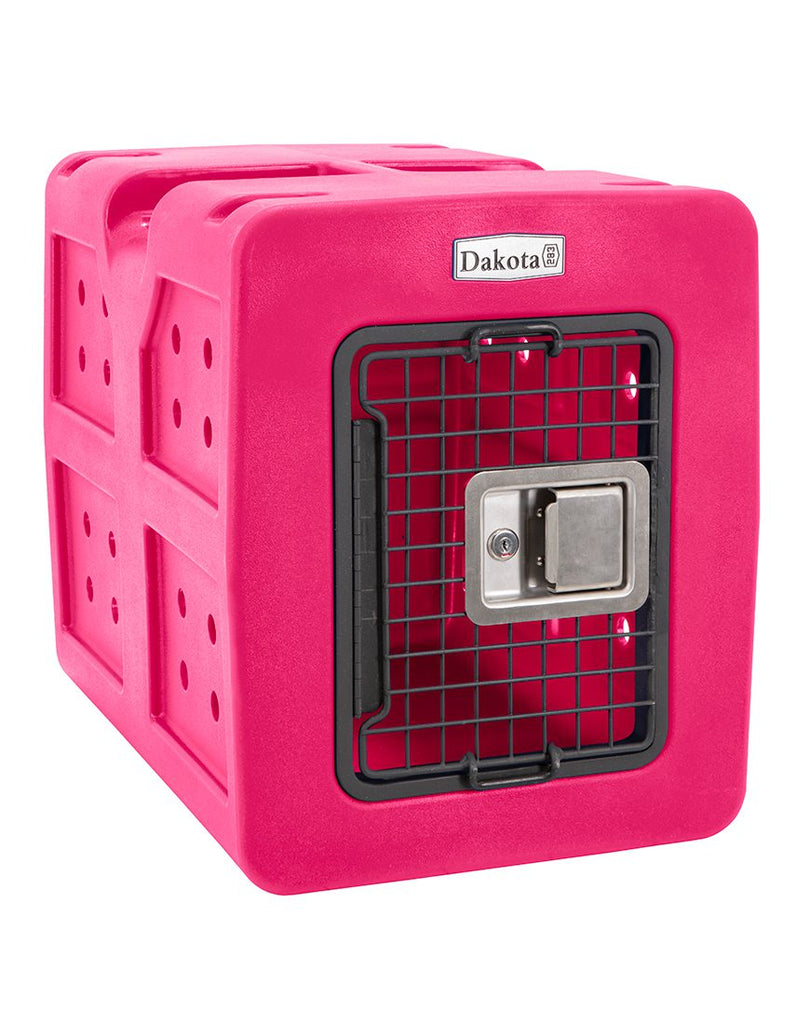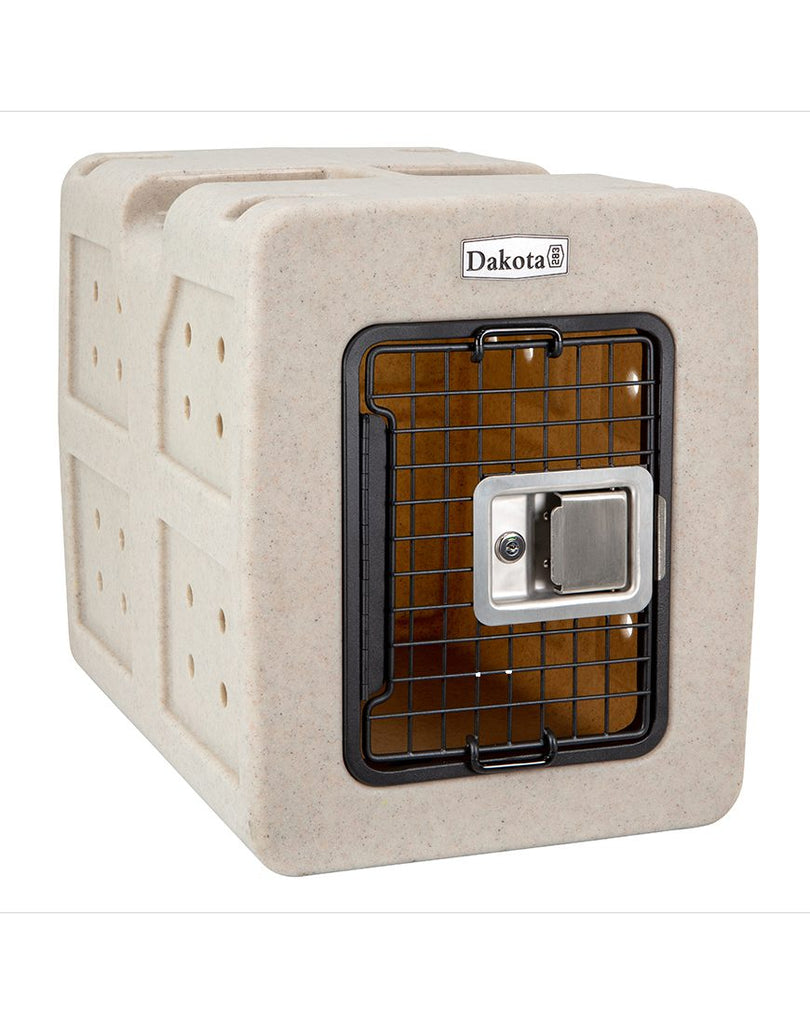Finding the right size dog kennel can be a daunting task. Is one brand’s medium the same as another? Is your dog on the larger side for that breed? Can the kennel fit in the places it needs to? These are the questions that you will come across, sometimes the hard way. Here is a guide to break down these questions and find a properly sized crate for your dog.
What is the Right Size Kennel for the Dog?
A dog needs to be able to stand up and turn around in a kennel. That’s the most basic definition of the right size kennel for a dog. Now if you find yourself saying, “Let me just buy the largest kennel possible,” hold on before you hit purchase. A dog also needs the kennel to be as close to that perfect dimension as possible. This is for several reasons. First, for a dog to feel safe in its kennel, it needs that “den” feeling which means security all around, a.k.a. closer kennel walls. The second is particularly of importance to house training a dog: if there is too much room, a dog could use it as a bathroom as well. A dog inherently does not want to be lying in their business, but enough room in a too-large kennel turns it into a one bath studio. Finally, when used for transport in your vehicle, a correctly-sized kennel is much safer in the unfortunate event of an accident. You don’t want your dog to have so much room that they can bounce around inside of the kennel and injure themselves during the accident.
Now that we have established how large the kennel must be in relation to your dog, what measurements do you need to know? Primarily we are concerned with two measurements, how long your dog is, and how tall your dog is.
This first set of measurements are “internal” kennel measurements. If the manufacturer is not showing both interior and exterior dimensions, buyer beware. Once you’ve measured your dog, compare the results to the internal measurements listed for the kennel.
For the length of the dog, measure nose to tail. Add 2 inches for smaller breeds, 4 inches for average breeds, and 6 inches for very large breeds.
For the height, some may tell you to measure a sitting dog. We advise that you measure a dog standing, from the floor to the top of their ears. The clearance above the dog’s measurement needs only be about an inch. In fact, many people will choose shorter kennels to encourage a dog to lay and rest for those dogs who travel a lot.
The width of the kennel is usually proportionate to these two original sizes in standard kennel builds, making the length the most important measurement. But remember that you do want your dog to be able to turn around in the kennel.
Determining a Kennel Size by Dog Weight
Determining a correct dog kennel size by dog weight can be a bit of a gamble. Often when a dog is on the cusp of a weight limit listed as a kennel manufacturer’s recommended sizes, it can prove to be inaccurate with lanky dogs. Actual measurements are a far more effective method.
What If My Dog is a Puppy?
Crate training is an important time for puppies and the size of the kennel will be critical to success. A kennel too large will create the issues of the one bath studio described above. Traditionally, people have resorted to buying smaller kennels and sizing up as the dog ages. Dakota 283 found a solution to this problem with our Forever Inserts. These inserts allow you to adjust the interior size of the kennel until the dog is old enough to fit in the full interior space. We offer this cost-saving product in our medium, large, and extra-large G3 kennels.
Fitting Your Kennel Where It Needs to Be
Now that we have the dog in the kennel, we need to consider where the kennel is going to live. Many will have both a house kennel and a vehicle kennel. For the most part, the house kennel can be accounted for with some home rearrangement, but it is not as easy in a vehicle. The most common places to carry a kennel are in the bed of a pickup truck, trunk of an SUV, or in some cases the back seats for side loading. Not all kennel manufacturers are created equal in these needs.
Dakota 283 manufactures two unique products to account for various storage conditions. The 2D side entry is a common choice for people looking for solutions where a traditional front door option may not always work, accounting for a second side entry door. The T1 low profile was originally designed to fit under a tonneau cover but can be adapted to many situations. And most importantly, our rotomolded designs provide superior safety while using the least amount of excess space often found in two-piece kennels and other designs.
To determine how a kennel will fit in your vehicle, you need to account for three measurements: the maximum height, maximum length, and maximum width. Be sure to measure the narrowest points of where a kennel will go, not the largest—and this may be the vehicle door rather than the available space inside. Once those measurements are determined, you will need to compare those measurements with the exterior dimensions of the kennel, not the interior dimensions.
Finding the right size kennel can be stressful. But if you follow these steps you will set yourself up for success for your dog’s life in both safety and training.










































